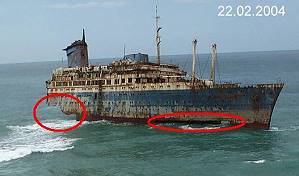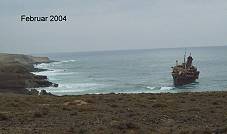|
|
30 Years and OverA very special "anniversary" ... |
The "Anniversary Day" ...
It is January 18, 2024: It is midday at Playa de Garcey and the tide has reached its lowest point. As we have done so often in recent years, we look out from the beach at the surf rolling in as always - and as always we almost automatically look for pieces of debris - but this time it will probably be for the last time.
Today is a "historic" day, but that apparently didn't result in crowds of people crowding here or at least a few interested people: No, apart from us, as has usually been the case in recent years, there's not a soul to be seen anywhere.
But why exactly are we here today, even if it's "just us" and no other visitors that one might also have expected to meet here? Well, as always, we're here because of the wreck, which we've been reporting on for two decades now. It's been almost exactly 20 years since we reported, "She was still there - the `American Star´". And back then, in February 2004, we were actually already 10 years late. Because so long before that, namely on January 18th, 1994, what brought us here today, January 18th, to celebrate our 30th "anniversary" happened: namely, the aground of the former AMERICAN STAR here on the beach during a violent storm.
What did we write when we first saw the huge wreck in this bay 20 years ago:
"She is really impressive. From the first moment, when you can catch a glance of her smokestack across the beach. And then, when the whole ship slowly appears: She is lying as a stranded ghost ship in the dark bay and despite sunshine on this day, one can only imagine how it looks during different weather."So now we are here again in January 2024, will it perhaps be an “anniversary
and final visit”? In any case, we are now on the playa with a banner
aimed at the present day, detailing the essential sections and names
that this ship has had since its launch in August 1939 - in just 15
years, this would now be 100 years of history, well,
85 years will have to be enough too...!
![]()
We start to unload our equipment: We don't have any kites with us this time, as we once launched them here in 2006, but we can unpack the tripod, video camera and drone, including their launch and landing site, for which we are now using the tarpaulin from one of our sandbag ground anchors. We want to start a flyover with the drone as soon as possible, which could be our first and last one today ...
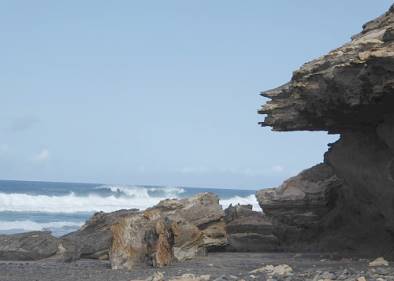 |
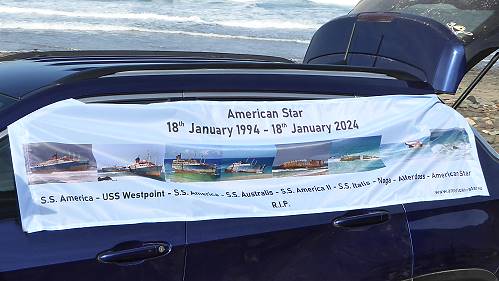 |
 |
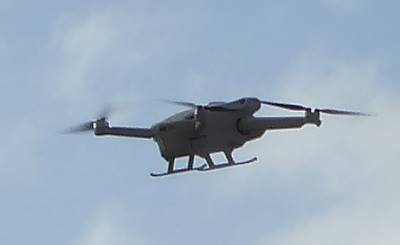 |
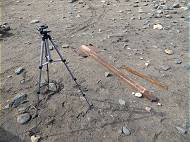 |
Outside, a well-known part of the wreck is still clearly visible
and this is also to be the destination of the overflight, as this
part of the ship is also well known to us
from another overflight in
2007 ...
![]()
But wait, at this point many memories come to mind, namely those of the ship's history over the last 85 years, but above all those of the last 30 years here at Playa de Garcey and those of the last two decades, during which we have also personally followed the wreck.
A wonderful overview of the ship's history was once given by our late author Bill Lee, who also had a personal connection with the ship, as he used to work at her shipyard himself.
His articles on the history of the SS AMERICA as Queen of the American Merchant Marine and the precise analysis of her decay off the coast of Fuerteventura, which he called An "Autopsy" by Sea, can already be described today as "classics" of essential information on this ship and the later wreck, which all fans of this ship have regularly dealt with for many years. And there are actually many more of these fans than you might think, as we have learned over the last two decades ...
In his introductory chapter on this famous ship, Bill naturally described its history under the names SS AMERICA, USS WEST POINT, RHMS AUSTRALIS and finally AMERICAN STAR, which probably characterize the most important stages in the "life" of the later wreck.
But let's take a brief look back!
The first decade on the coast: 1994 to 2004
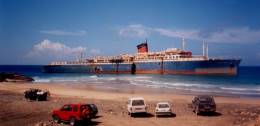 |
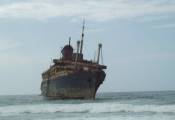 |
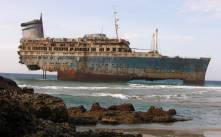 |
Shortly after the ship, last named AMERICAN STAR, ran aground, there were plenty of stories about the causes of the accident, ranging from speculation about insurance fraud to speculation about the ropes of the tug NEFTEGAZ 67, which are said to have broken during this extreme hurricane night (but more about this tug later).
Soon the Playa de Garcey, where the ship had run aground (picture
above left), was a gathering point for a wide variety of visitors,
including locals who plundered the wreck in the weeks that followed
and tourists who enjoyed being able to almost walk to it in the
shallow waters created by the wreck, including the "sandy beach" in
the bay. In the years that followed, the wreck also became a death
trap for many an adventurer who, like many others, felt magically
drawn to it ...
![]()
Due to the unfavorable position in the bay and the immense force of the sea rolling in, the ship broke in two after just two days, which put an end to all considerations regarding a possible salvage operation. While the bow of the ship had been militarily reinforced for its use as the USS WEST POINT in the Second World War, this was of course not the case for the stern. Just two years after running aground, this part of the wreck rolled onto its left side and finally sank. There is also a chapter in our documentary about the circumstances of this process, namely the Speculations Around The Stern.
Ten years after she ran aground, there was only the well-preserved
bow of the wreck as we encountered it in February 2004 (picture
above center). Towards the end of 2004, the wreck was also visited
by Jan Liska, who had been known to us for some time and
who was also a proven "Confluence hunter" at the time. During his
visit, not only was the picture above right taken, but of course the
Confluence Point N 28° W014° was also "conquered" ...![]()
2005
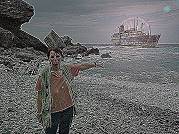 |
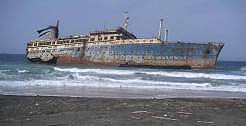 |
Naturally, we visited the Playa de Garcey again in February of the following year. In the meantime, we had already received many emails from readers who were also attracted by the famous wreck and sent us their pictures. Of course, every change was closely observed and everyone also sent their observations, garnished with their expectations for the future of the wreck. As large parts of it kept disappearing or seemed to be bent, the prognoses were usually not particularly favorable.
Mysterious stories abounded about the AMERICAN STAR and its prehistory. There was even A Ghost Story by Bill Lee, which motivated us to create a "ghostly" art series about the wreck (picture above left). It was simply an exciting find on the southwest coast of Fuerteventura, this remnant of a famous ship!
So perhaps we can still understand today why the e-mail from a reader and the photo he sent us really shocked us: he had been on site at Playa de Garcey on November 7, 2005 and had taken the picture that struck the new "fan" like a bolt of lightning. Stephan Roth's picture clearly showed what our eye, trained by countless photos, had noticed at first glance: the wreck had obviously rolled to one side quite suddenly and had probably also slipped considerably lower! We now had to feverishly gather new information in order to be able to assess exactly what had happened overnight and what this could mean for "our" wreck!
And indeed, what was clearly visible in the photo from November,
we were finally able to reconstruct exactly 3 years later: Using
pictures and a video from reader Gerd Jacobi, we were able
to determine that the collapse of the wreck had occurred on the
night of November 03/04, 2005. Was this the beginning of the end,
was the question at the time ...?
![]()
2006
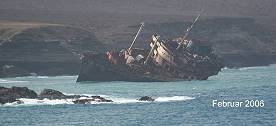 |
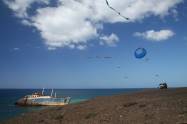 |
 |
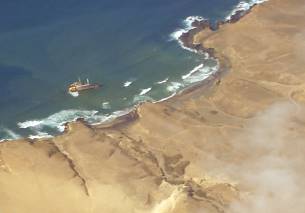 |
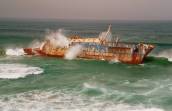 |
The year 2006 was filled with disaster reports about the wreck right from the start. Again, a piece of the foredeck had broken away and one thing above all: again and again, it had increasingly laid on its side. It was attacked around the clock by powerful waves, which can take on frightening proportions during storms down there in the bay and reshape the beach from one month to the next. So it was no wonder that there was all the more speculation about how much longer it would last.
In February, we were shocked as soon as we arrived and took our first look at the wreck: how much the remaining foredeck had already laid on its side (picture top row left)! Nevertheless, during our stay on the island, we were not deterred from organizing a small-scale "Fiesta de Cometas" with our kites on the rocks, more or less "in honour" of the "Amstar", as she was now known everywhere - it just had to be done (top row, right)!
In the meantime, there were also other stories about the wreck: we met Dirk Evers, who had swum over to the wreck for the first time in July 2003 and had also climbed it. In the summer of 2006, he tried again (picture top left), but ended his attempt prematurely after an unpleasant encounter with a jellyfish ...
We were also contacted by an airliner pilot: Timo Weber
had also flown over the wreckage with his plane in February 2006 and
sent us a photo of it (picture top center), which we would use later.
As you could see, the "Amstar" had already become something of an
international star in the meantime!
![]()
Unfortunately, this did not prevent the wind, weather and waves
from continuing their work of destruction, with which they were
particularly successful this year. The heavy autumn storms on the
coast did the rest, leading to many disturbing motifs (picture above
right) ...
2007
 |
 |
In view of the events surrounding the wreck and our long-cherished plans, there was something very special during our stay on site in February 2007. If a visit on board was really no longer possible and the condition of the wreck was deteriorating rapidly, then it should be another "close" visit: After contacting Christian Niehoff and his HELITOURS S.L., we planned a helicopter flight that would take us very close to the wreck. We'll keep it short here, because you can find out more about our flight on the Remembrance Film "Tribute to an Old Girl", which, like the Special Edition CD "AMERICAN STAR", is still available in a double pack.
This flight was truly worthwhile in every respect (picture above left): The Austrian pilot, who usually also completed special flights such as those for difficult installations of mountain railroads, delivered what he promised: The approaches, some of which took place close to the surface of the water, made for a unique experience. We also fulfilled another mission on this flight: our author Bill Lee had been shocked by the current condition of the wreck and, as he was also a regular attendee of the USS WEST POINT veterans' reunion with a dwindling number of participants due to age, he suggested that we combine our trip to the wreck with a commemoration of the veterans who had died in the meantime. As agreed, we also fulfilled this request by dropping a wreath over the wreck, which led to many thank-you emails from the USA ...
On board were Dirk Evers and his partner, whom we had invited on this adventure. It must have been a wonderful experience for Dirk to once again be close to the shipwreck that had become his dream destination. Unfortunately, there was some very sad news a few months later: Dirk Evers had died in a serious motorcycle accident ...
Unfortunately, there was also some very sad news regarding the
weakening wreck: As if it had just been waiting for us, it took less
than a month after our helicopter flight for the Amstar to finally
collapse: In a photo from March 2007, reader Peer Wetterling
informed us that the wreck had now broken apart again - the
definitive beginning of the end was thus sealed (picture above right)
...
![]()
2008
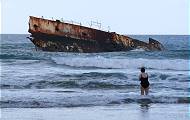 |
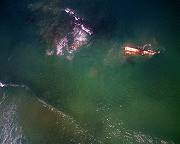 |
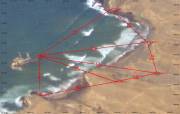 |
Of course, the collapse of the previous year didn't stop us from
visiting the wreck again at the beginning of 2008 to get a personal
impression. At Playa de Garcey, there was now only the once
militarily reinforced bow to be seen, which sometimes appeared to be
very close, but that couldn't really be the case, could it (picture
top left)? Once again, we had kites with us, but this time, due to
favorable wind conditions, we were able to perform overflights of a
different kind (picture top center) with a flycam mounted under a
kite. Also a very exciting action!
![]()
Nevertheless, the pictures from the Playa de Garcey and the impressions there had raised the question of whether the bow might have been washed a little further inland by the merciless sea? An extensive measurement campaign was launched, during which we were also able to use Timo Weber's flyover image (top right). And the conclusion at the time: "Our measurement result shows one thing: even if it looks different at first glance, the bow tip is essentially still in the same place as it has been for many years ..."
However, another event in 2008 should not go unmentioned: We had already mentioned the ominous tug NEFTEGAZ 67, which had the AMERICAN STAR on its line in 1994, which broke loose in a heavy storm during this transfer under conditions that were not fully clarified and drifted to the Playa de Garcey - this tug collided with a Chinese freighter in March 2008 and 18 Ukrainian sailors lost their lives - a late retaliation ...
The increasing deterioration of the wreck did not stop fans of
the ship from continuing to be very active: the previous year, we
had already received a story from Wolfram Dallwitz, the
admin of the Australian AUSTRALIS forum, about personal experiences
on the former emigrant ship: his article was called
Ships in the Night. This was followed
in 2008 by Steve Tacey's memories in
Trips and Treasures. Even before we
discovered the wreck, there was already a book about the ship, which
reports on its history.
What happened until 2020 ...
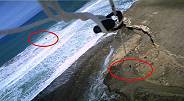 |
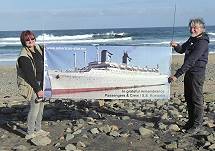 |
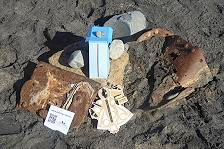 |
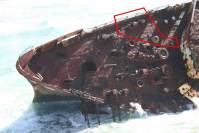 |
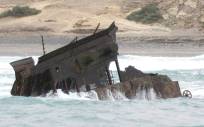 |
 |
So what happened next for us with this memorable ship? In the years that followed, it was generally only possible to follow the loss of material on the rest of the bow, but this continued to persist, which was of course only due to military reinforcements during the Second World War. Nevertheless, further visits followed every year after 2008, which we also report on in the magazine. In 2011, there were once again launches with kites and the Flycam at Playa de Garcey (picture top row left), but this was more of an adventure in the prevailing wind direction than a photographic success.
Finally, 2014 was the first "anniversary year", as we had already been reporting on the decay of the famous wreck on the Playa for a decade by then - which itself had already had another decade "under its belt" here on this island ...
But 2014 was not over yet: In February 2016, we had another mission on our hands: This time it was Wolfram Dallwitz's AUSTRALIS Forum, which wanted a banner to commemorate the emigrant ship of those days - of course we hoisted it during this visit (picture in the middle of the top row) and still have it in our archive today. Anyone interested in this original can contact us!
And we did something else during this visit: we wanted to solve
the task of navigating the island without GPS or similar aids, using only
aids that were available from the 18th century onwards. We finally
solved this problem with a self-made sextant for the latitude and a
"brought along time" for the longitude (picture top row right). Even
though this did not give us our exact position at Playa de Garcey,
we still hit the island of Fuerteventura roughly in the middle - a
result that even Captain Cook would have been proud of in 1770 ...
![]()
After this visit, we visited the site again in 2018 and 2020 -
the last time before the corona-staging made it impossible to travel as
before. During both visits, we followed the development of the still
visible bow remnant as usual at the lowest low tide (pictures above
right compared to the marked area from the helicopter flyover in
2007 above left).
2024
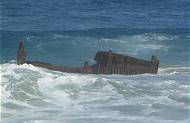 |
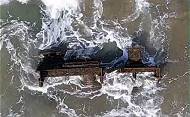 |
 |
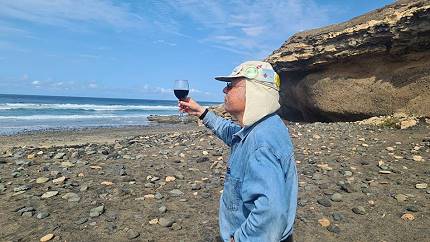 |
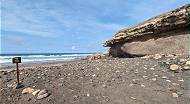 |
So now we are back on site for the first time in four years - the longest interruption since our first visit two decades ago. Nevertheless, on this "anniversary day", January 18, 2024, everything is still very familiar, and even the most conspicuous part of the bow remnant is clearly visible from land at today's lowest tide (top row left).
We launch our drone as planned, the DJI Mini 3 Pro is supposed to take another close look at the part from above in today's favorable wind conditions. And it also masters this task: we look exactly from above at the part (picture top row right), which was also flown over by the ari al productions drone in 2016 and photographed from the front. The clearly recognizable row of bollards of the former deck are also clearly visible this time.
Finally, our video of the
flyover turns out to be somewhat melancholy, because it shows
very well the transience of all these relics and will certainly
remain our first and last drone flight at this bay ...
![]()
Our visit ends with the usual picnic with everything that goes with the occasion (pictures above). A greeting in the direction of the wreck with an excellent Rioja is also a must today, as it is, after all, a "historic" stay for us in this equally historic bay: there will be no more trips here later to investigate the further fate of the existing remains, as the current visit is not without reason under the motto "30 Years and Over" - and so it should be, a rather "quiet celebration" after so many years ...!
One more note to conclude our series of reports.
The AMERICAN STAR may now have all but disappeared, but it is
apparently still effective with its unusual history: In 2024, an
American movie titled
American
Star (2024) will be released. From the trailer, you can see that
it was partly filmed on the original locations of Playa de Garcey.
We will certainly be watching this movie as soon as possible and
will of course report on it in a follow-up post here!
![]()
© 2024 J. de Haas
